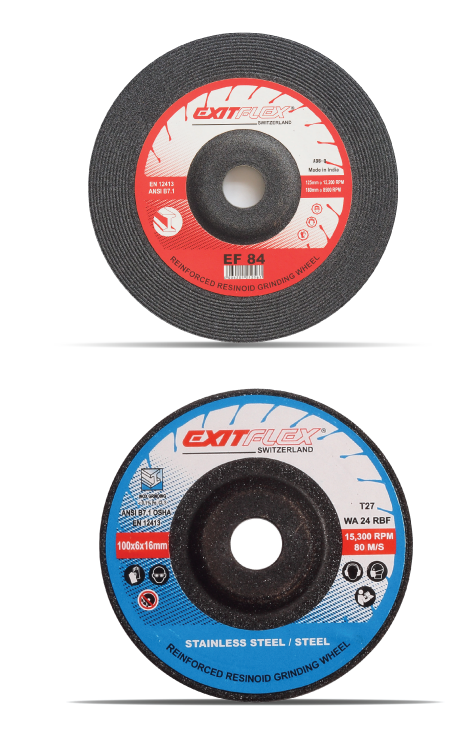THE OPTIMAL SPEED
Too low If the RPM of the machine is too low, the cut-off wheel and grinding disc tend to “jump”, and the disc edges wear down unevenly. Particularly with thin material cross-sections, such as cutting in or wire, this causes the grit to be separated from the bond and the disc wear speed is above average. Optimal Exitflex cut off wheels and grinding discs are high-performance products and were developed such that best disc performance (measured according to the stock removal volume to disc wear ratio) is achieved in the range right below the maximum peripheral speed. Keep the machine running at a consistently high RPM and, if needed, select a more powerful machine.
An important requirement for a satisfactory cutting result is the correct grinding pressure. A common mistake is to reduce the grinding pressure to preserve the disc and extend the cutting life of the wheel. If this is done, the material overheats (turns blue); the cut-off wheel becomes clogged and “burns up”. This is why the grinding pressure should always be set such that the cutting time is as short as possible. This is particularly true for heat sensitive material with large material cross-sections.
THE CORRECT GRINDING PRESSURE
An important requirement for a satisfactory cutting result is the correct grinding pressure. A common mistake is to reduce the grinding pressure to preserve the disc and extend the cutting life of the wheel. If this is done, the material overheats (turns blue); the cut-off wheel becomes clogged and “burns up”. This is why the grinding pressure should always be set such that the cutting time is as short as possible. This is particularly true for heat sensitive material with large material cross sections.